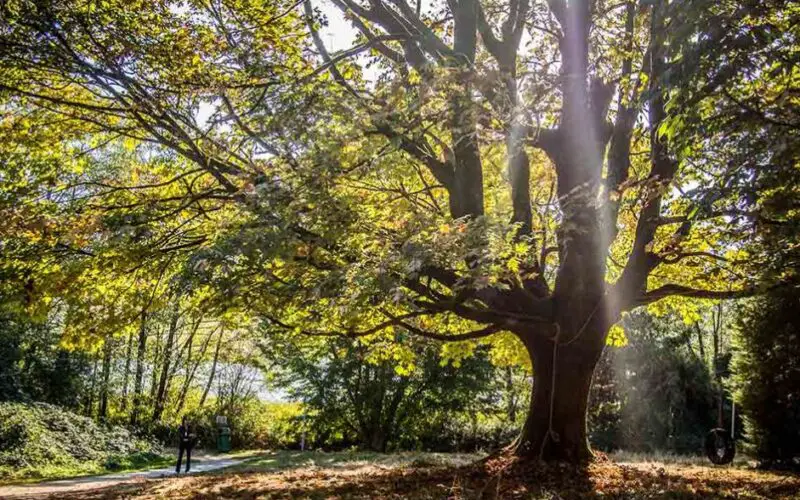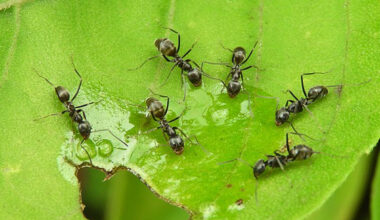All plants need more or less light to grow well. The light intensity varies according to the exposure in which they are installed, whether they are plants planted in the ground or even indoor plants.
Contents
Which direction gets the most sun?
The southern orientation allows you to benefit from the sun at any time of the day and offers a very nice luminosity as well as a good thermal comfort. Another possibility, the double orientation south and south-west which allows to have a beautiful luminosity during the day as well as in the evening, and this, even in winter.
This is the ideal orientation if you have garden plants that can tolerate full sun, since it is also the orientation that gives the greatest amount of sunlight.
Knowing the direction needs of plants
Before adopting a plant, it is always wise to know its needs in order to put all the chances on your side to see it grow in an optimal way. Let’s take two opposite examples: ferns, which need shade and coolness, and cacti, which like full sun and high temperatures. The needs are quite different, and the exposure should be adapted to them.
Between these two extremes is a whole range of plants, including plants from tropical forests, often grown indoors, but also perennials and shrubs from more temperate zones. Each plant has its own specific needs and should therefore be installed with full knowledge of the facts.
Which direction for my indoor plant?
North-facing room
Is your apartment facing north? You don’t get much light, but that’s no reason to give up on a planted interior! The lack of light in these rooms will not be a problem for climbing plants such as pothos, dracaenas which appreciate the dimmer light, or ferns… In the same way, varieties such as dieffenbachia, fatsia, azalea or calatheas can withstand low light interiors. On the other hand, remember to place your plants less than two meters away from a source of natural light for healthy plants.
East-facing room
Does the light illuminate your home in the morning? Your apartment faces east. This is the preferred exposure for many tropical plants. Thanks to the mild sun and gradually rising heat, your plants won’t get heatstroke and can acclimate without worry.
To enjoy your plants for a long time, choose resistant varieties such as alocasias, kentias or other plants of the palm family for a 100% exotic interior! Flowers such as amaryllis or the famous “chain of hearts”, an original fat plant with heart-shaped leaves, also appreciate this type of semi-shaded exposure.
West-facing room
With a western orientation, flowering plants or succulents will find their happiness in your interior. Orchids, aloe vera, bromeliads, maranta leuconeura or even sword polysticks are all yours! These varieties need good light, but fear direct sunlight, which can cause them to dry out. So choose to install your plants near a window, but be careful with the sun’s rays. An exposure without direct sunlight will allow them to flourish without risk.
South-facing room
Finally, if your apartment is bathed in light and warmth, you are facing south and therefore have plenty of choice! Ficus, yucca, cactus or even succulents, treat yourself. You can opt for sansevierias, wickedly called “mother-in-law’s tongues”, mammillarias if you prefer flowers, lithops, the famous “rock plants” found in the desert, or even very exotic nolinas!
These plants come from hot and sunny countries and need a lot of natural light. So place them preferably on a terrace or near a well exposed window. Your plant will give you a lot back!
Which direction for my garden plants?
What to plant on the south side?
The southern exposure is known to be the sunniest and warmest of the day. The only disadvantage of this exposure is during the summer. The place can become a real furnace and the soil can dry out very quickly. However, all this heat stored during the day has the advantage of being restored to the plants when the cool night sets in.
It is in the south that you can allow yourself exotic plants or early bloomers. Planting should be done at the end of the day or very early in the morning to avoid dryness. Watering should be done at the same time. And then, gardening in full sun is not really recommended.
Depending on your region, you can plant :
- oleander
- olive tree
- hibiscus
- hydrangea
- lilac
- cistus
- wisteria
- bignone
- lavender
- plumbago
- bougainvillea
- cordyline
- solanum
- gazania
- nasturtium
- gaura
- bidens
- dipladenia
- pelargonium
- yucca
- agave
- aloe
- sedum
- Cactus
Plants to avoid in the south: clematis and roses.
What to plant on the east side?
The eastern exposure only gets sun in the morning, so this is the wall for plants that only need sun early in the day. It is also a very humid exposure, because rain coming from the east generally hits this wall and runs off at its foot. Watering will therefore be reduced. Before planting, make sure the soil is well drained so that your plants do not rot. Each plant, each root ball or each shrub requires good soil that breathes.
Depending on your region, you can plant :
- spirea
- rose
- laurel-tin
- peony
- heather
- Japanese quince
- viburnum
- holly
- seringat
- honeysuckle
- impatience
- perennial geranium
- petunia
- hellebore
- daisy
- hollyhock
- parsley
- chervil
- mint
- raspberry bushes
What to plant on the north side?
The north is generally not lit by the sun. It is a shady and humid place. Often we avoid planting in the ground. We generally opt for planters with a quality soil.
But this side is rather appreciated in summer during the hot periods. It will therefore be rather for plants that appreciate humidity as those that grow in the undergrowth. The hardy heather is a perfect example. Add clay balls to the bottom of the planting hole to improve drainage.
Depending on your region, you can plant:
- dogwood
- hydrangea
- rhododendron
- azalea
- fuchsia
- fern
- camellia
- ivy
- astilbe
- mahonia
- lily of the valley
- hosta
- Persian cyclamen
- begonia
- lemon balm
- sorrel
- chives
- chives
- comfrey
- egopod
Plants to avoid in the north: roses, as they will not flower.
What to plant on the west side?
The west side is a good compromise. It has the advantage of getting sun all afternoon! The heat shows progressively at the beginning and goes down slowly in the evening, which allows to give back the heat at night. It is the most consensual exposure. It is in the west that you will be able to grow the greatest variety of flowers, bulbs, perennials or shrubs.
Depending on your region you can plant :
- wisteria
- rose
- bignone
- peony
- spirea
- magnolia
- Mexican orange tree
- Japanese pittosporum
- Trachelospermum jasminoides
- carnation
- phlox
- ligularia
- camellia
- astilbe
- weigelia
- clematis
- scaevola
- tobacco
- heliotrope
- diascia
- petunia
- helichrysum
- mint
- sage
- a foot of rhubarb
- hops









